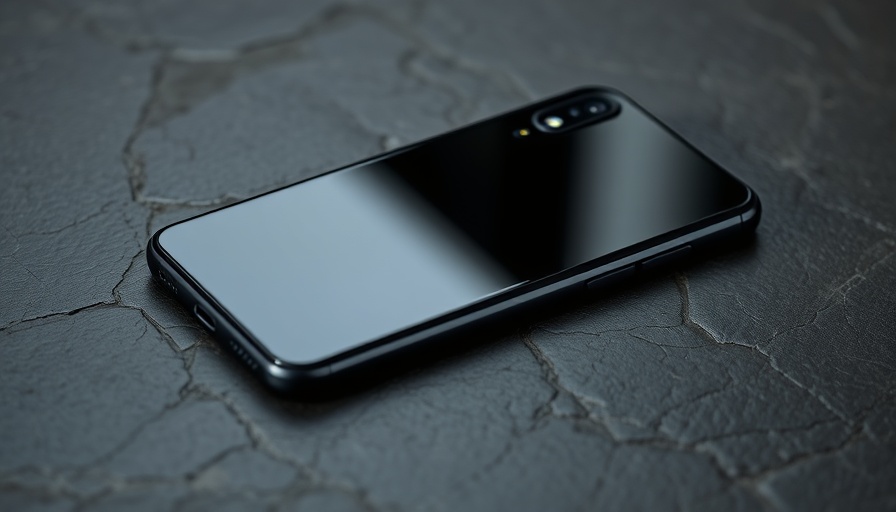
The Alarming Rise of Pixnapping: A New Cyber Threat
In a significant technological security breach, Android devices have fallen prey to an alarming vulnerability termed Pixnapping. This innovative attack enables hackers to hijack two-factor authentication (2FA) codes and other sensitive data displayed on the screens of Android phones, functioning in mere seconds without any need for permissions.
Understanding the Pixnapping Attack
Pixnapping marks a disturbing evolution in cyber threats. Researchers from top universities have revealed that this attack can exfiltrate sensitive data by merely monitoring the rendering processes that occur on an Android device's display. Initially demonstrated on devices like the Google Pixel and Samsung Galaxy S25, it is important to note that the potential for expansion to other models is considerable, especially given the vulnerabilities inherent in the Android ecosystem.
The method behind Pixnapping is both ingenious and alarming. Hackers trick users into downloading a seemingly harmless app. Once installed, this app redirects Android’s programming interfaces to tap directly into another app’s data displayed visually on the screen. Consequently, everything from 2FA codes generated by applications like Google Authenticator to chat messages can potentially be captured, all without the user’s consent or knowledge.
Exploiting Rendering Vulnerabilities
The mechanics of Pixnapping are frighteningly simple yet highly effective. The malicious app uses Android’s built-in APIs to invoke calls that force targeted apps to display certain data. For example, when a 2FA code is generated, the malicious app can overlay semi-transparent filters on top, allowing it to infer the pixel colors pertained to the displayed data. According to expert analyses, the attack can harvest information in as quickly as 14 to 30 seconds, posing an urgent risk to countless users who rely on 2FA for security.
The Implications of Cybersecurity Weaknesses
This novel attack highlights severe lapses in the cybersecurity framework that many users have come to trust. Traditionally, 2FA is heralded as a robust security measure that protects against unauthorized access. However, when combined with vulnerabilities like Pixnapping, the safeguards it offers are rendered almost useless, exposing users to potentially catastrophic data breaches.
Experts point out that while Google has implemented several mitigations, reports indicate that a variant of the attack can bypass these patches. This presents an ongoing threat, particularly to those who carry sensitive information on their Android devices.
Lessons Learned and Future Predictions
The emergence of Pixnapping is both a wake-up call and an invitation for manufacturers and users alike to reevaluate their approach to security. For users, this means adopting safer practices like updating devices regularly and avoiding apps from unverified sources. Meanwhile, manufacturers must ensure that their systems are built with more stringent safeguards against such vulnerabilities.
Looking forward, this scenario underscores the necessity for robust cybersecurity education and vigilance among users. Awareness around potential threats will empower individuals to make informed decisions about their device security.
Current Mitigations and User Actions
While it may sound daunting, there are steps users can implement to protect themselves against Pixnapping. Starting with updating devices promptly to include security patches is crucial. Furthermore, users should exercise caution when downloading new apps and scrutinize permissions requested by existing applications. Tools like dedicated mobile security applications may provide additional layers of protection.
Researchers also emphasize the crucial role of user vigilance and proactive education in combating cyber threats. Understanding how vulnerabilities manifest can equip users to better defend themselves in the evolving landscape of digital security.
Conclusion: Staying Vigilant in the Face of Threats
The advent of attacks like Pixnapping reinforces the importance of ongoing vigilance in cybersecurity. As hackers develop increasingly sophisticated methods to exploit vulnerabilities, it is imperative to be proactive about protecting personal information.
In light of these findings, users are encouraged to stay informed and proactive about updates in cybersecurity practices. Together, we can build a more secure digital future, remaining one step ahead of would-be attackers. Remember, your privacy is worth safeguarding!
 Add Row
Add Row  Add
Add 




Write A Comment